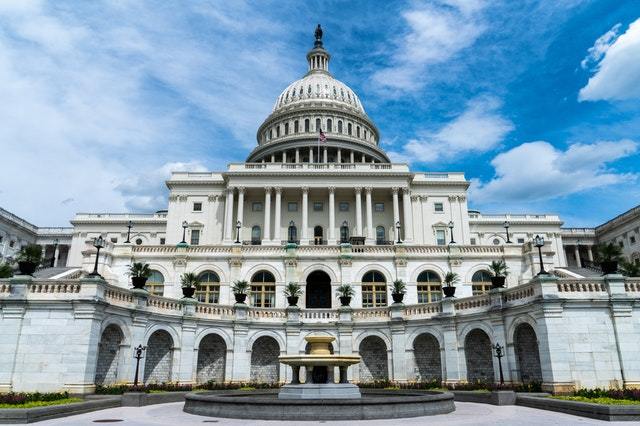
Hearing aids and PSAPs (Personal Sound Amplification Products). Although both appear to serve a similar purpose, they have their own functions and purposes, which make understanding the difference very important when considering a purchase.
With the similarities in their appearances and features, these products are hard to differentiate for the consumer. That’s why people wonder “why are hearing aids so much more expensive than PSAPs?”, and want to know the differences.
If you too have such questions, read on to clarify your questions regarding hearing aids and hearing amplifiers (PSAPs).
Contents
Difference Between Hearing Aids and Amplifiers
Apart from the price, there is one key difference.
Hearing aids are medical devices – Hearing aids are FDA regulated medical devices, intended for people with hearing loss. These are professionally fitted, in or behind the ear by an audiologist or hearing care specialist, after a comprehensive hearing test.
They are specifically designed to relieve symptoms of hearing loss and offer clear hearing by amplifying sound frequencies.
According to the MarkeTrak VII survey, more than 31.5 million people in the United States suffer from hearing loss issues, yet only 1 in 5 people have a device to help them with their issue. Many people benefit from devices and should seek medical help for a better quality of life.

PSAPs are non medical devices – These devices are used to enhance environmental hearing for the people with a full range of hearing. People use personal sound amplifiers to hear better for situations such as noisy restaurants, to get better sound quality while watching TV, and also to hear kids sleeping in another room.
In 2009, FDA issued guidance that states that hearing amplifiers are not intended to be used by the people with hearing impairment. Both devices are similar in that they amplify surrounding sounds into the person’s ear, but have different objectives and regulations around it.
So, just because the cost of hearing aids is high, people should not automatically opt for a PSAP because it is cheaper. Consumers should do their research and seek professional advice, and make decisions accordingly.
What is the Average Price of Hearing Aids?
However, there is no denying that the hearing aid price is very high. In 2015, a report from President’s Council of Advisors on Science and Technology mentioned that the average price of a single hearing aid is $2,300 (that’s $4,600 for a pair!). It also states that a hearing aid can go up to more than $6,000, depending on the technology and features included. This is the price for a single hearing aid, so if you need a pair like many people, expensive hearing aids will cost over $10,000 – that’s a lot of money, considering most hearing aids are not covered by medicare.
What is the Average Price of Hearing Amplifiers (PSAPs)?
The cost of these electronic devices is way cheaper when compared with hearing aid prices. Their range starts as cheap as $100, but a good quality amplifier will be in the $250~$600 range.
The price usually varies according to the performance, technology used, design, and user experience of the product. Where cheap amplifiers amplify sound volumes in all frequencies, higher end amplifiers will give you the option to customize the amplification levels for each sound frequency, giving you the power to personalize your hearing device to your unique hearing preferences.
Good quality PSAPs also offer various features such as Bluetooth connection, portable chargers, rechargeable batteries and portable charging cases, and more. Although they are not FDA regulated and are not made for people with hearing loss, a person who only wants to use sound devices to hear better in certain cases may benefit a lot from the functions and cost of a hearing amplifier.
Why Do PSAPs Costs Lesser than Hearing Aids?
We already covered that the significant difference between hearing aids and PSAPs are that one is a medical device and one is not.
But why does that result in such a big difference in cost?
Here are some reasons:
- PSAPs are self-fitting and do not require a medical prescription, or multiple followups for adjustment. This saves a lot of cost! (and time!)
- PSAPs are not regulated by the FDA. Although this of course has its pros and cons, there is more room for making changes in conventional business and manufacturing processes.
- Hearing aid markets are dominated by long-existing large companies, which have strong ties to hearing aid distributors.
However, there is good news for people looking for affordable hearing aids – the OTC hearing aid market is coming, and regulations are said to be released this year. This law, released in 2017, stated that hearing aids will be available to consumers Over The Counter, without the need for a hearing specialist’s prescription. This market is said to open up many new options for customers, hopefully at a cheaper price point. (learn more here.)

The Ultimate Features of Olive Smart Ear
If you think that a hearing amplifier is sufficient for your hearing needs, the Olive Smart Ear may be the product for you.
It is a Bluetooth personalized hearing amplifier, which won multiple awards in CES 2020.
Its features include:
- Short 5 min personalization process to customize each sound amplification level of different frequencies.
- Superior sound quality that captures 99.8 percent of sounds within range.
- Different hearing modes such as “Conversation Mode”, “TV Mode” and “Feedback Cancellation Mode”.
- Multi-purpose portable charging base and multiple size silicon and foam ear tips.
- Touch control that lets the user easily hop on and off the phone calls.
People need to select hearing aids and amplifiers according to their needs. If you aren’t sure which one you need, we suggest you contact a hearing care professional – don’t leave it unsolved!
The information in this guide has been written using the following reliable sources:
https://www.ncbi.nlm.nih.gov/pmc/articles/PMC6003813/








